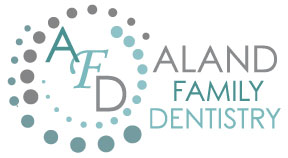When most people think of gum disease, they picture an elderly person with a mouth full of toothless gums. However, gum disease is incredibly common-in fact, it’s the leading cause of tooth loss in adults aged 35 and older. And it’s not just a problem for seniors; according to the Centers for Disease Control and Prevention (CDC), 46% of American adults aged 30 and over have gum disease.
What is Gum Disease?
Gum disease is an infection of the gums that can progress to affect the bones that support your teeth. It’s usually caused by a build-up of plaque-a sticky film of bacteria that forms on your teeth-that isn’t removed through regular brushing and flossing. If plaque isn’t removed, it can harden into calculus (tartar), which can only be removed through professional cleaning.
The early stage of gum disease is called gingivitis. Gingivitis is caused by plaque, a sticky film of bacteria that constantly forms on your teeth. Plaque begins to form within 24 hours after you brush your teeth. If plaque isn’t removed through brushing, flossing, and professional cleanings, it will begin to harden and turn into tartar. Tartar is difficult to remove and can only be removed by a professional cleaning.
If gingivitis isn’t treated, it can turn into periodontitis, the advanced stage of gum disease. Periodontitis occurs when plaque and tartar cause the gums to pull away from the teeth and form spaces called pockets. These pockets fill with bacteria and pus, causing the gums to become even more inflamed and damaged. If left untreated, periodontitis can lead to tooth loss.
Signs That You May Have Gum Disease
Bleeding gums: One of the most common signs of gum disease is bleeding gums. This can happen when you brush, floss, or even eat hard foods. If your gums are frequently bleeding, it’s important to see a dentist or periodontist so they can determine the cause and provide treatment.
Red or swollen gums: Gums that are red or swollen may be a sign of infection. This sign is often accompanied by tenderness or pain in the gums. Infection can damage the gum tissue and bone that support your teeth, so it’s important to seek treatment as soon as possible.
Persistent bad breath: Persistent bad breath (halitosis) can signify gum disease because plaque and tartar build-up on the teeth can cause a foul odor. If you have bad breath that doesn’t go away with brushing and mouthwash, make an appointment to see your dentist or periodontist.
Receding gums: When the gum tissue around your teeth begins to pull away from the teeth themselves, it’s called “receding gums” or “gum recession.” This sign is often one of the first indicators of periodontal disease because it exposes more tooth roots, making them vulnerable to infection.
